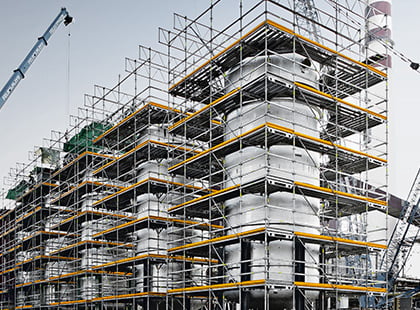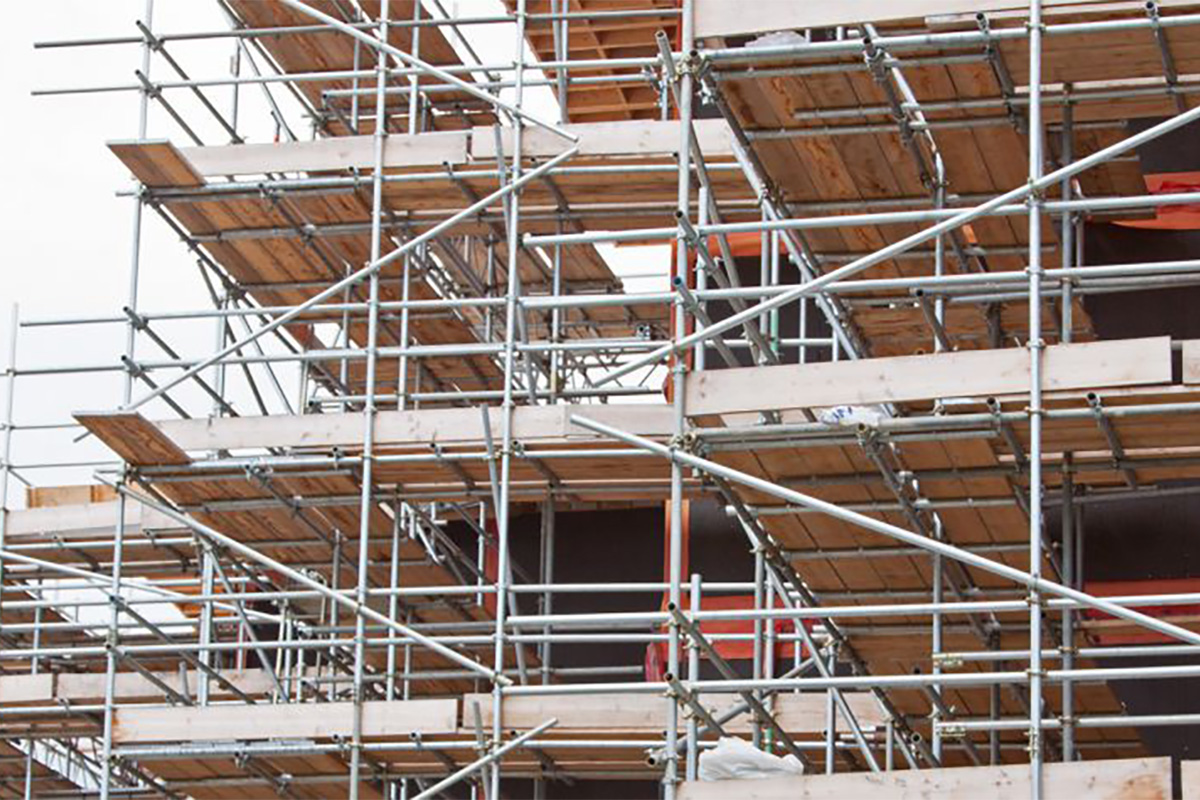High-Quality Residential Scaffolding for Seamless Home Renovations in Surrey
Discovering the Different Kinds Of Scaffolding Made Use Of in Building Tasks
The building and construction sector counts heavily on various kinds of scaffolding to meet specific project requirements, each offering distinctive benefits and applications. Standard framework scaffolding supplies a strong foundation for basic tasks, while suspended scaffolding is crucial for work with skyscraper frameworks. Other options, such as system and rolling scaffolding, deal with performance and mobility, specifically. The cantilever variant proves important in urban settings where space is constricted. Recognizing the nuances of these scaffolding kinds is important for enhancing security and efficiency on construction sites, triggering a more detailed evaluation of their one-of-a-kind characteristics and applications.

Standard Framework Scaffolding
Standard frame scaffolding is among the most widely utilized techniques in the building market due to its robustness and versatility. This system includes vertical and horizontal structures that are assembled to develop a secure system for materials and employees. The primary elements consist of upright articles, horizontal journals, and diagonal braces, which together provide a strong structure that can support substantial tons.
Among the essential benefits of traditional structure scaffolding is its adaptability to numerous building tasks, ranging from household buildings to big industrial frameworks. The modular design enables for very easy assembly and disassembly, making it reliable for both long-term and temporary tasks. Additionally, the system can be customized in height and width, suiting different structure layouts and website conditions.
Security is extremely important in scaffolding applications, and standard structure systems are geared up with guardrails and toe boards to stop drops and make sure employee defense. Routine assessments and adherence to safety and security regulations are vital in keeping the honesty of the scaffold (Scaffolding). On the whole, typical frame scaffolding stays an essential option in the building and construction industry, offering a trusted system for labor and boosting overall task efficiency

Suspended Scaffolding
Put on hold scaffolding supplies a special service for building jobs that require accessibility to elevated surface areas, particularly in scenarios where typical framework scaffolding might be not practical. This kind of scaffolding is usually suspended from the roofing or upper degrees of a structure, using a system of pulley-blocks, platforms, and ropes to produce a working room that can be adjusted to numerous heights.
One of the key advantages of put on hold scaffolding is its flexibility. It can be conveniently rearranged or lowered to fit changes in building needs, making it ideal for tasks such as home window setup, frontage work, and upkeep on skyscraper structures. Furthermore, the marginal impact of suspended scaffolding enables better use ground area in city environments, where area is frequently minimal.
Safety and security is a vital factor to consider in the usage of suspended scaffolding. In general, suspended scaffolding provides a effective and efficient solution for accessing hard-to-reach locations in numerous building and construction circumstances, boosting both productivity and security on site.
System Scaffolding
System scaffolding, typically related to as a modern service in the scaffolding industry, includes pre-engineered components that can be promptly constructed and adjusted for numerous building and construction projects. Scaffolding. This kind of scaffolding is identified by its modular layout, which enables convenience and efficiency on work sites, accommodating architectural demands and various elevations
Commonly made from high-strength steel or light weight aluminum, system scaffolding offers enhanced durability and security. The components include vertical messages, horizontal ledgers, and diagonal braces, which adjoin securely, ensuring a durable structure. The design usually integrates standard fittings, simplifying setting up and disassembly procedures, thus minimizing labor time and costs.

Rolling Scaffolding
Moving scaffolding is a flexible choice to conventional fixed scaffolding, designed for flexibility and ease of usage on building and construction websites. This kind of scaffolding is composed of a system supported by frames with wheels, allowing employees to quickly transfer it as needed. The wheelchair feature considerably boosts efficiency, as it minimizes downtime associated with assembling and dismantling taken care of scaffolding.
Normally built from lightweight products such as aluminum or steel, rolling scaffolding supplies a sturdy yet mobile option for jobs calling for constant repositioning - Scaffolding. It is specifically helpful in tasks such as paint, drywall installation, and electric work, where access to numerous elevations and areas is essential
Security is paramount in rolling scaffolding style, with attributes such as securing wheels to stop unintended activity when in use, and guardrails to secure workers from drops. Additionally, lots of models are adjustable in height, suiting various task requirements.
Cantilever Scaffolding

The layout of cantilever scaffolding generally includes using arms or brackets anchored to a structure or framework, allowing the platform to prolong external safely. Safety is paramount; therefore, these scaffolds have to be crafted to browse around here stand up to different loads and environmental conditions. Normal examination and upkeep are necessary to guarantee structural stability and employee safety and security.
Cantilever scaffolding is favored for its adaptability and reliable usage of area, making it a popular selection in city environments where area constraints are usual. Furthermore, it helps with simpler accessibility to high elevations, inevitably contributing to the total effectiveness of construction tasks. Similar to all scaffolding kinds, proper training and adherence to security standards are essential for workers utilizing cantilever scaffolding.
Final Thought
Traditional structure scaffolding provides stability, while suspended scaffolding offers versatility for raised jobs. System scaffolding assists in fast assembly, and rolling scaffolding enhances movement for varying work environments.
Conventional frame scaffolding supplies a durable foundation for general jobs, while suspended scaffolding is vital for work on high-rise frameworks.Rolling scaffolding is a versatile choice over at this website to traditional set scaffolding, developed for wheelchair and simplicity of use on construction websites. As with all scaffolding kinds, appropriate training and adherence to security requirements are crucial for workers making use of cantilever scaffolding.
Typical structure scaffolding offers stability, while put on hold scaffolding uses adaptability for elevated jobs. System scaffolding assists in fast setting up, and rolling scaffolding enhances movement for differing job settings.